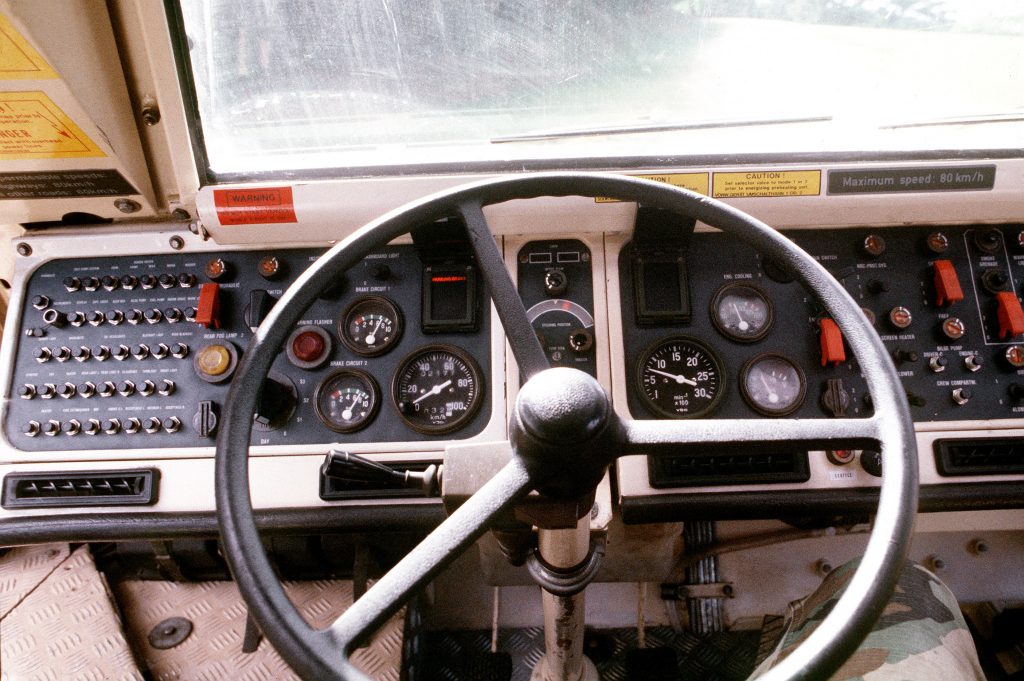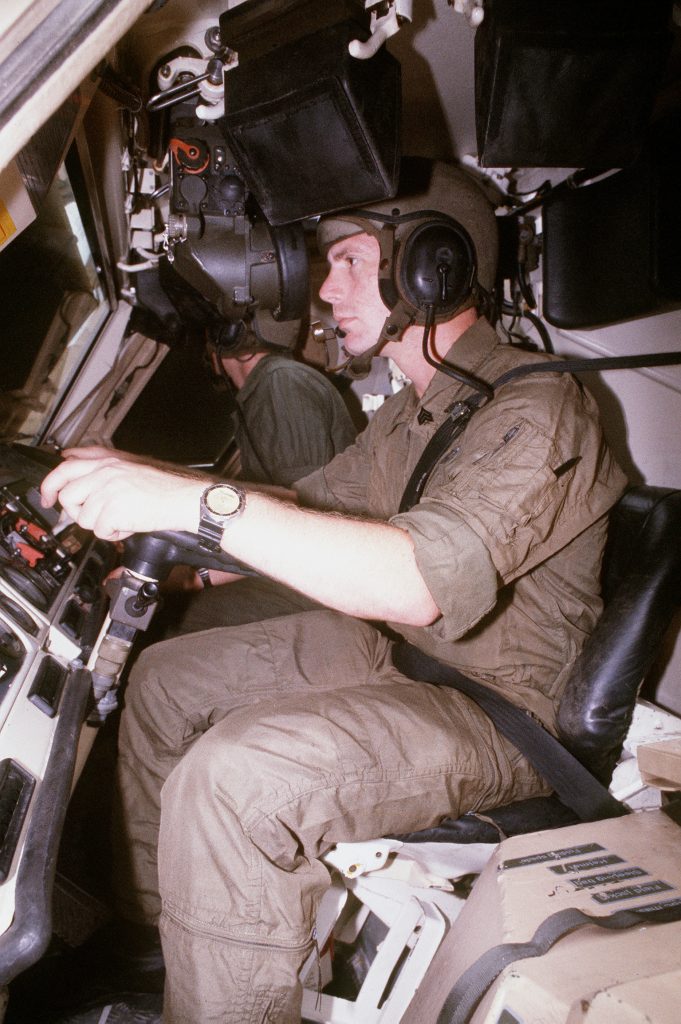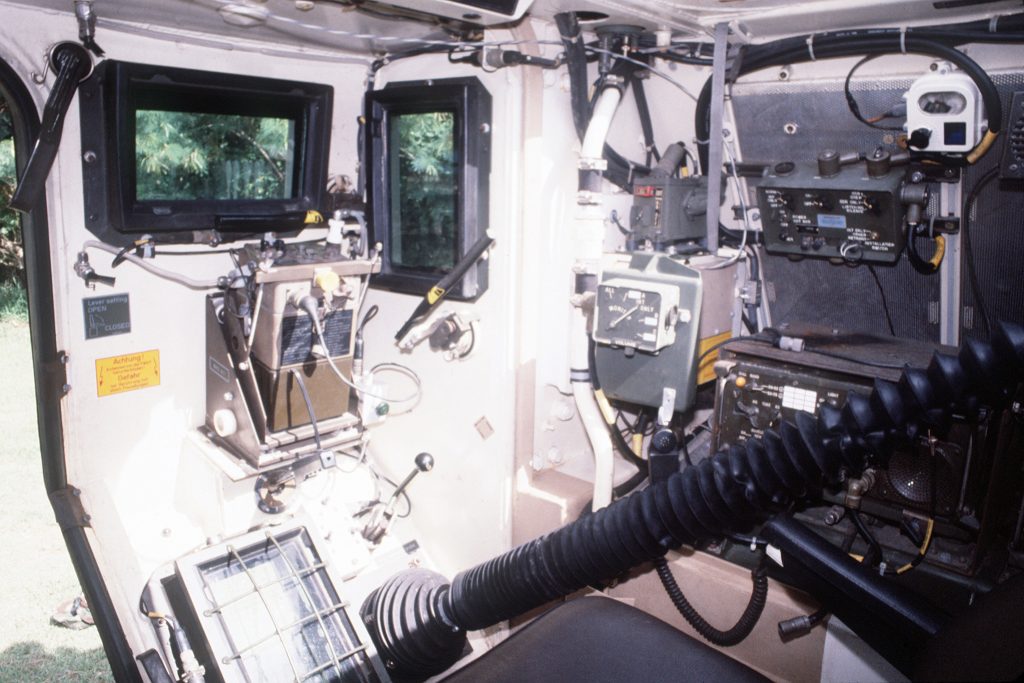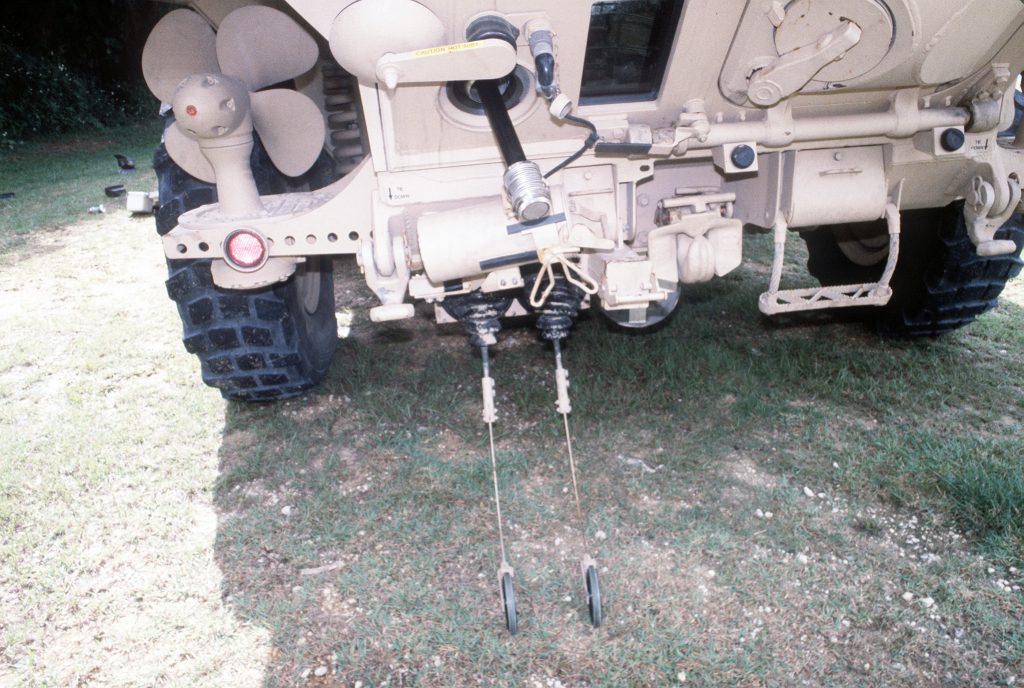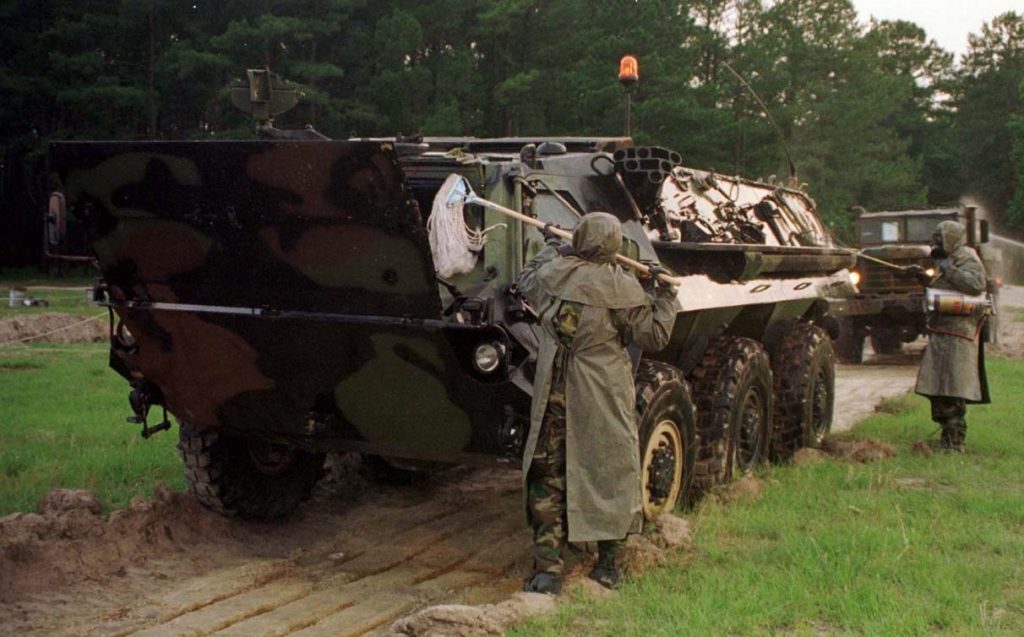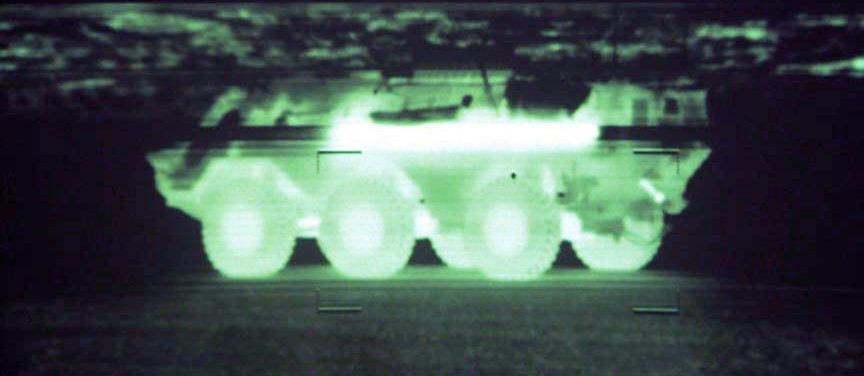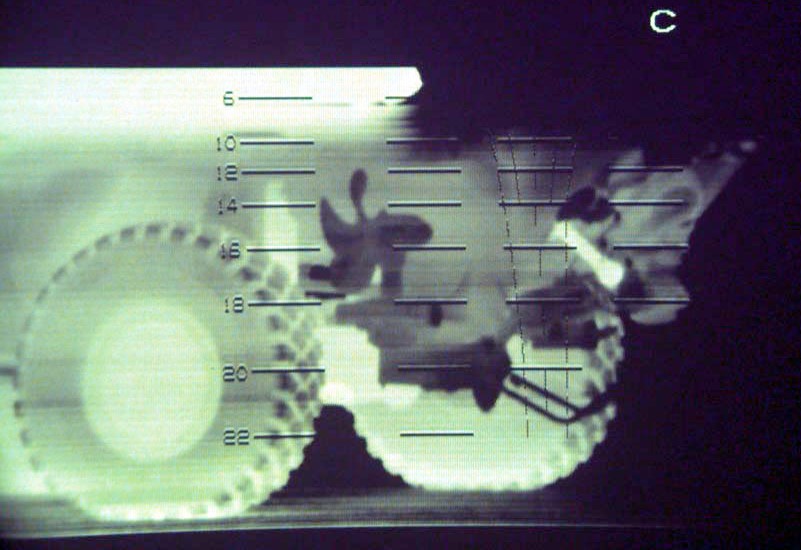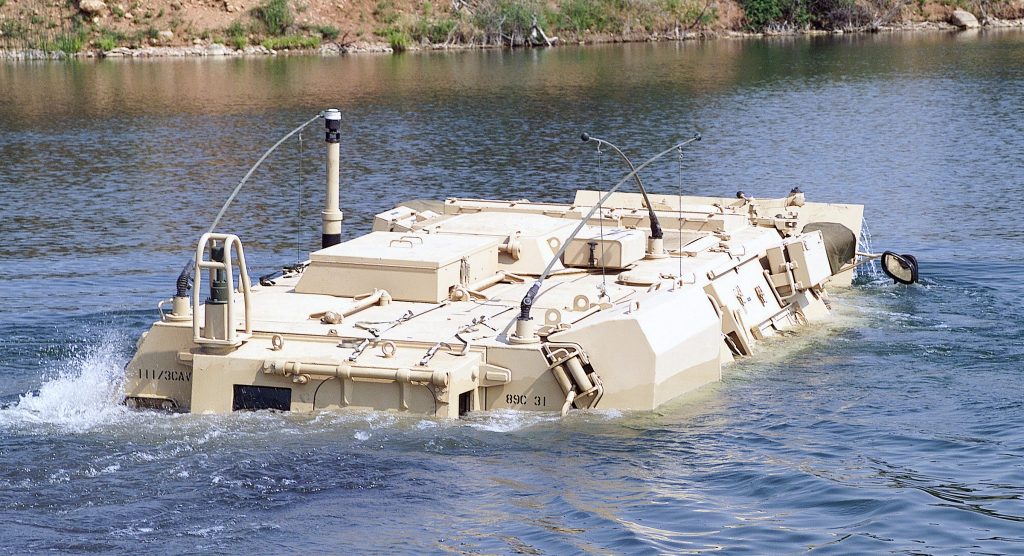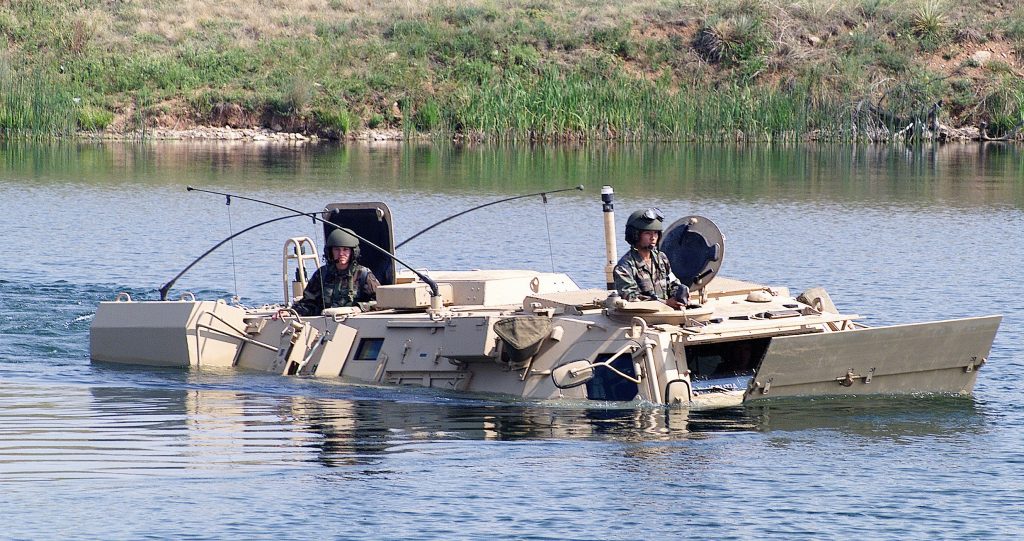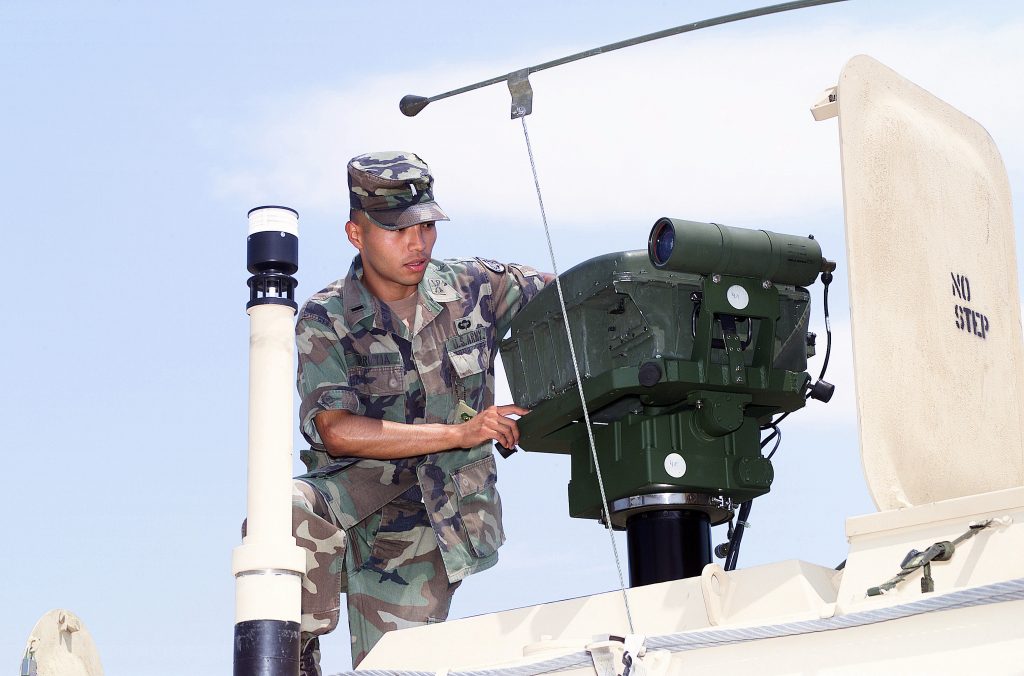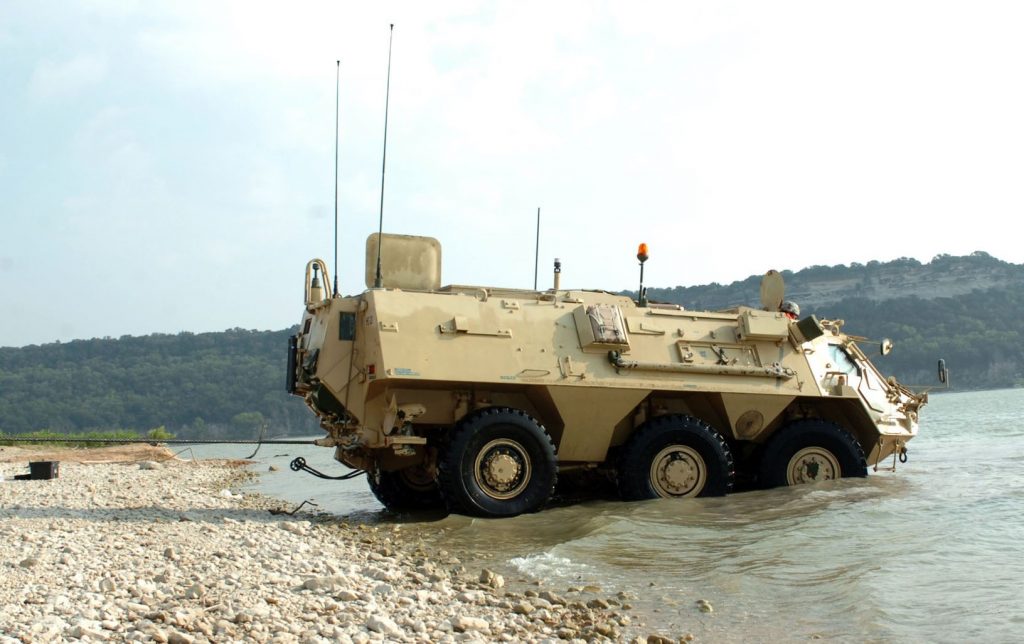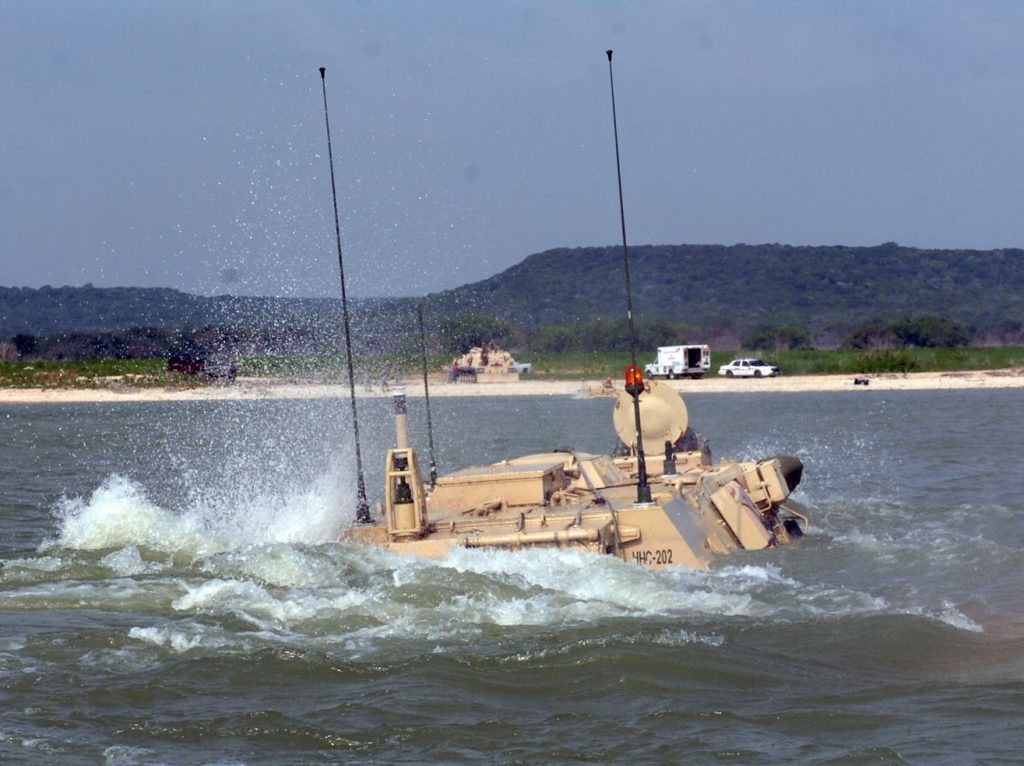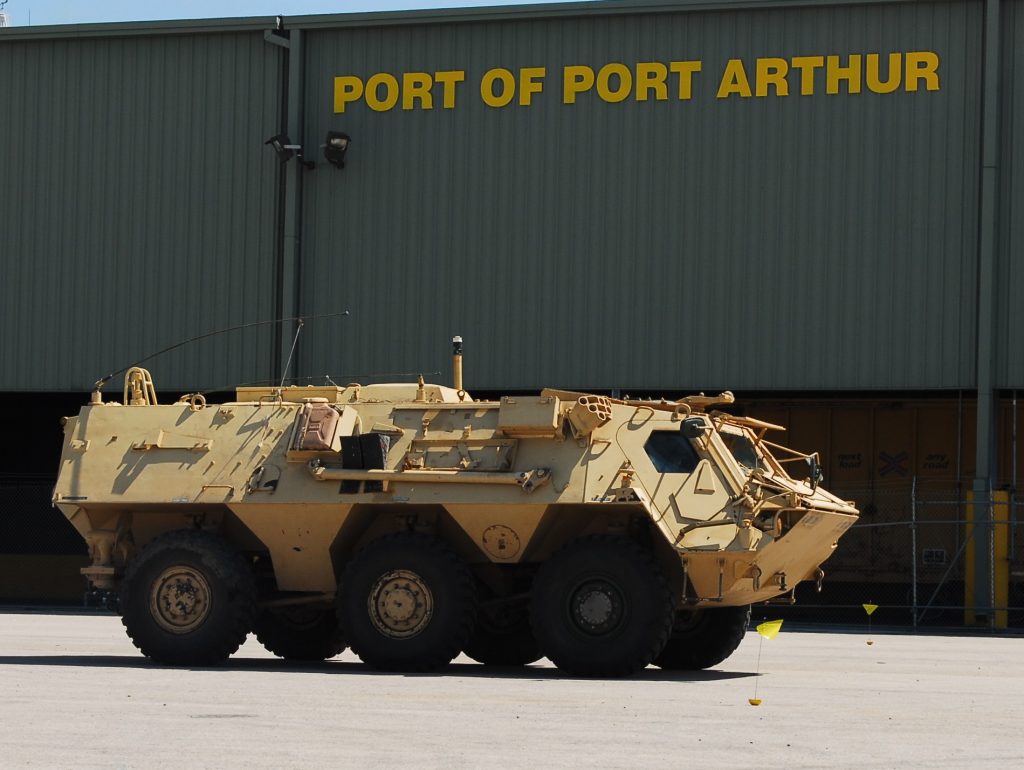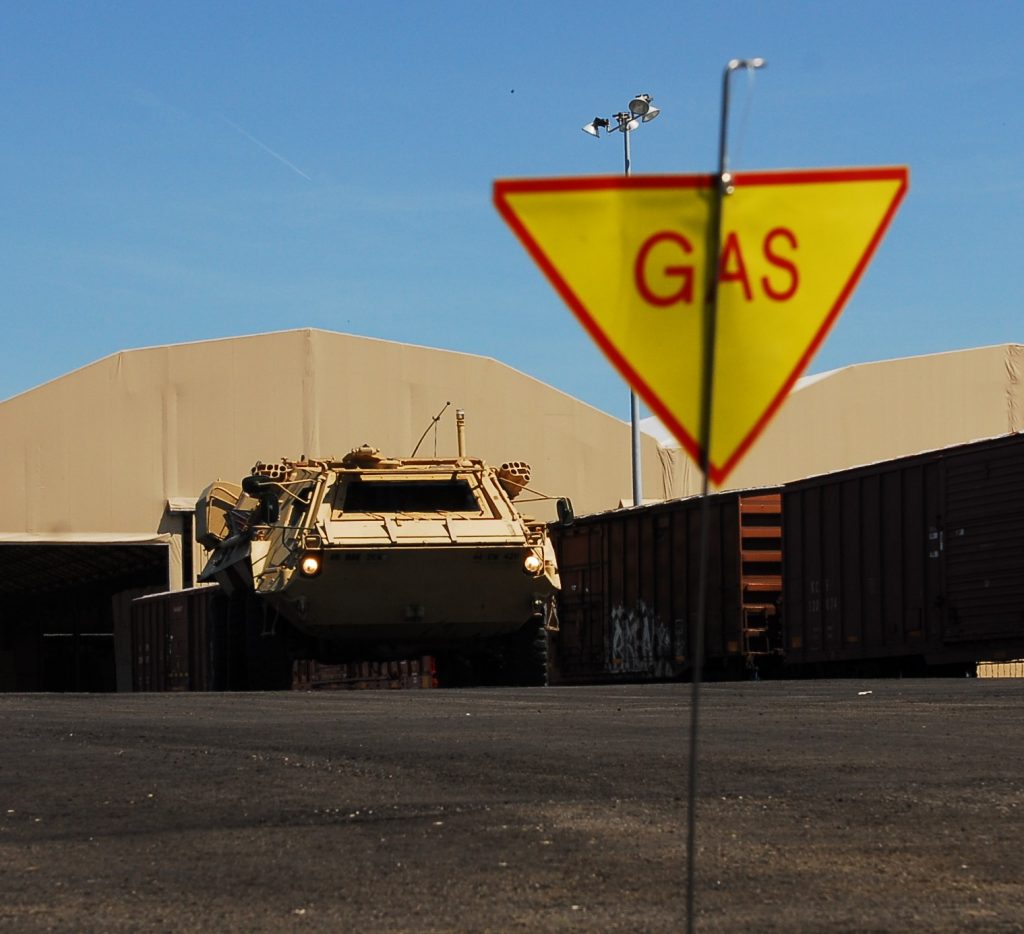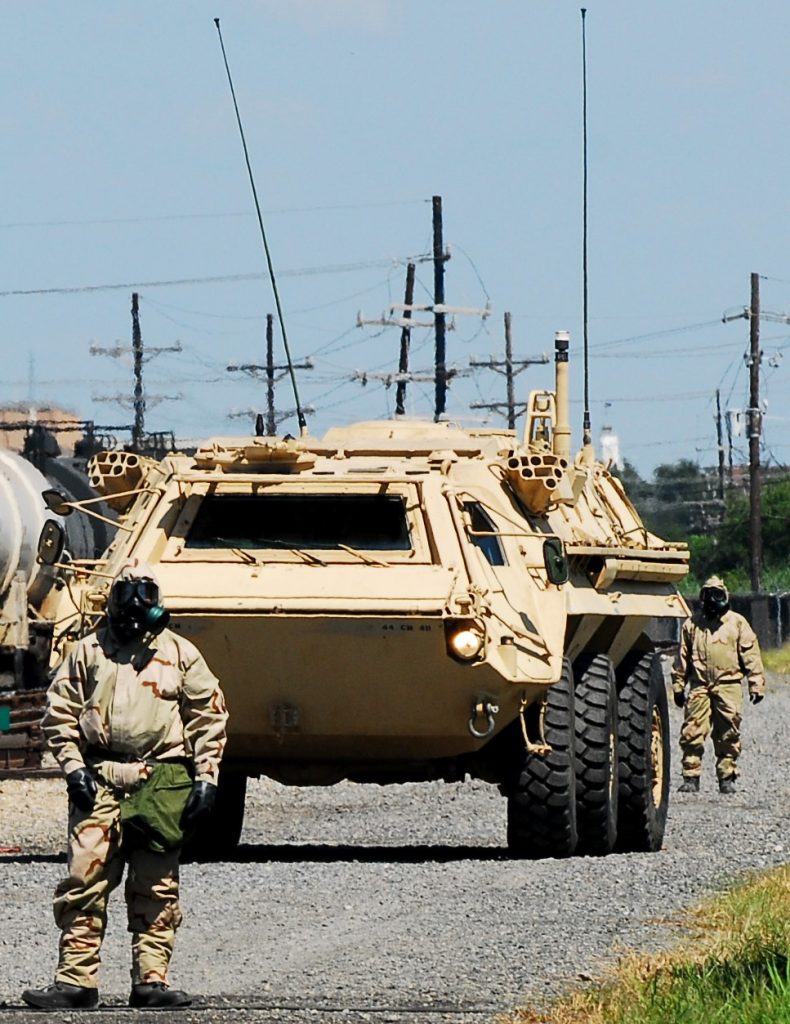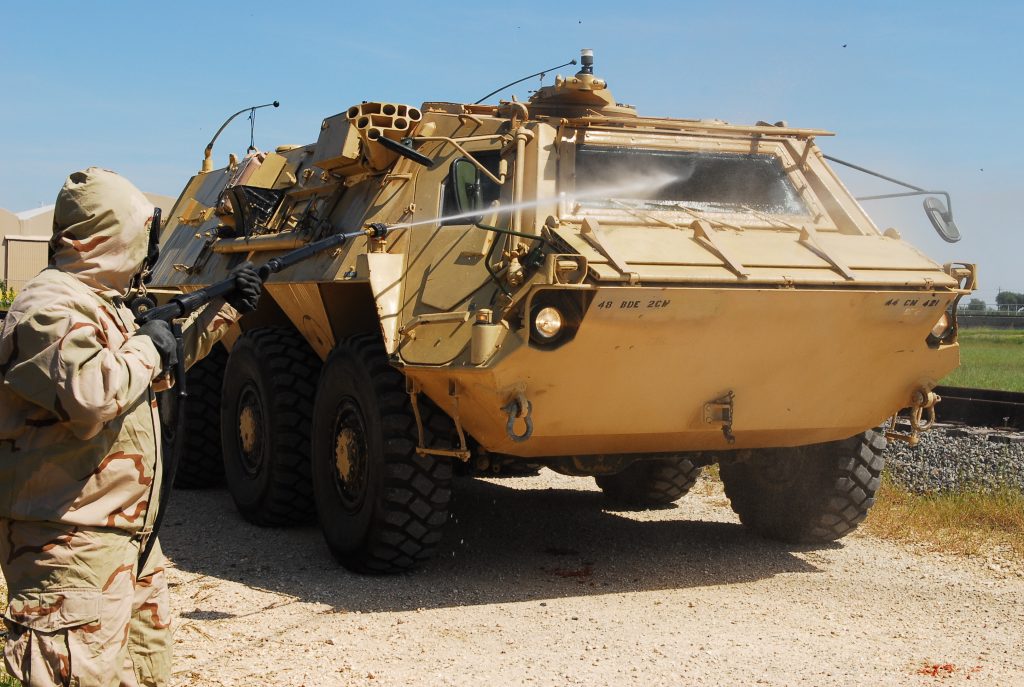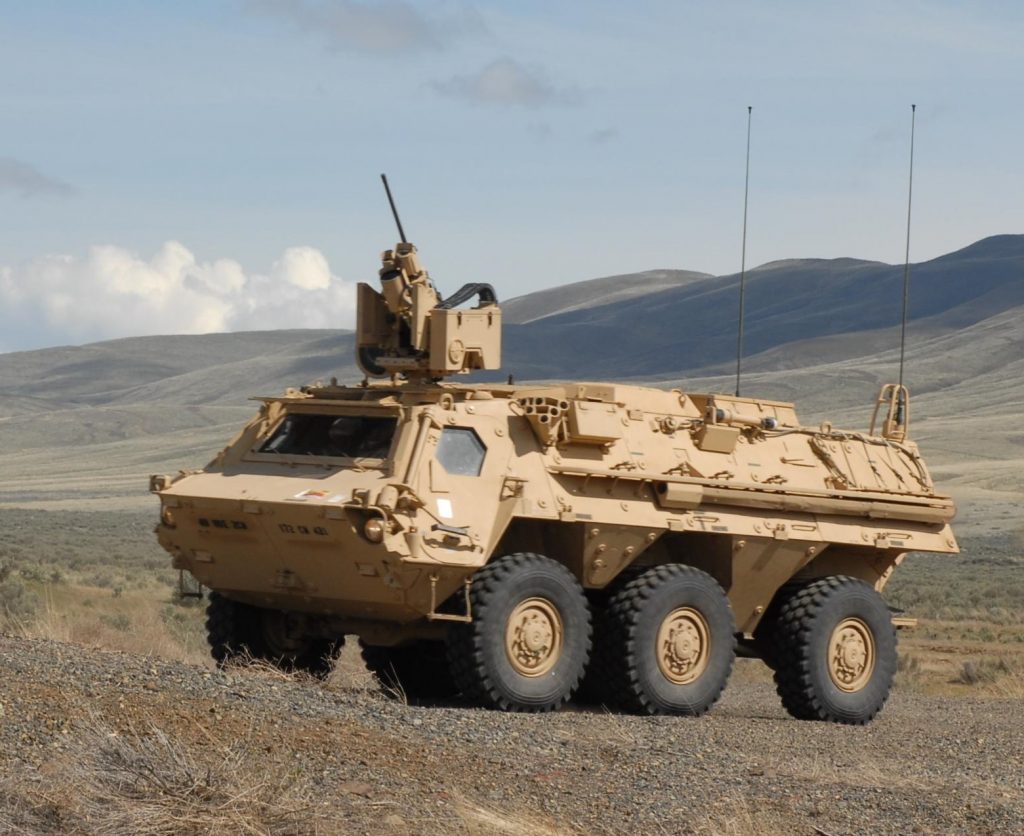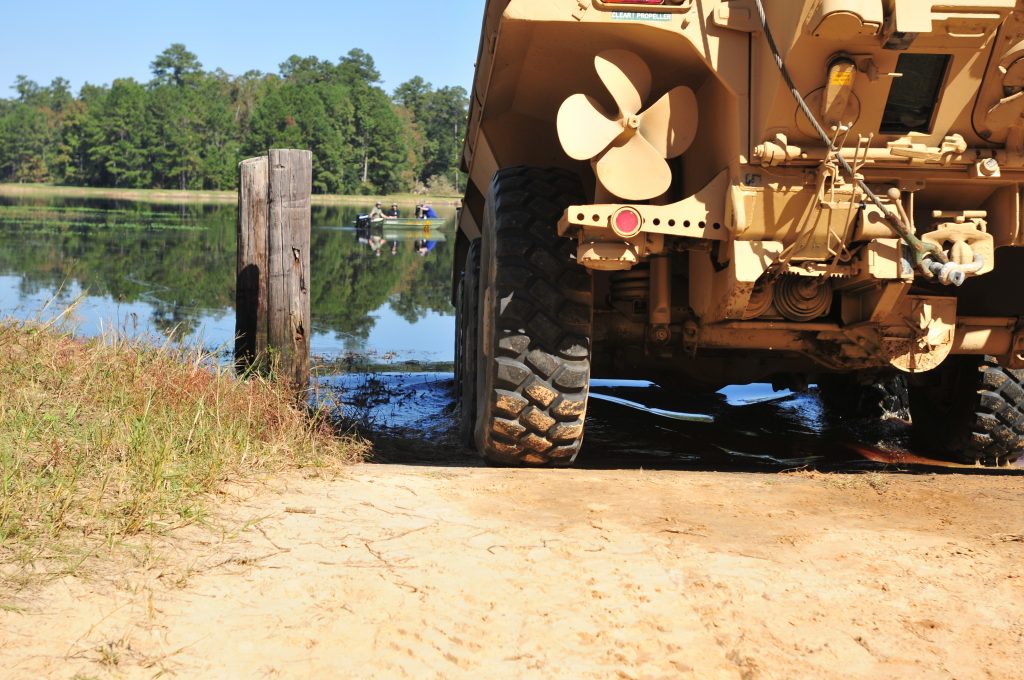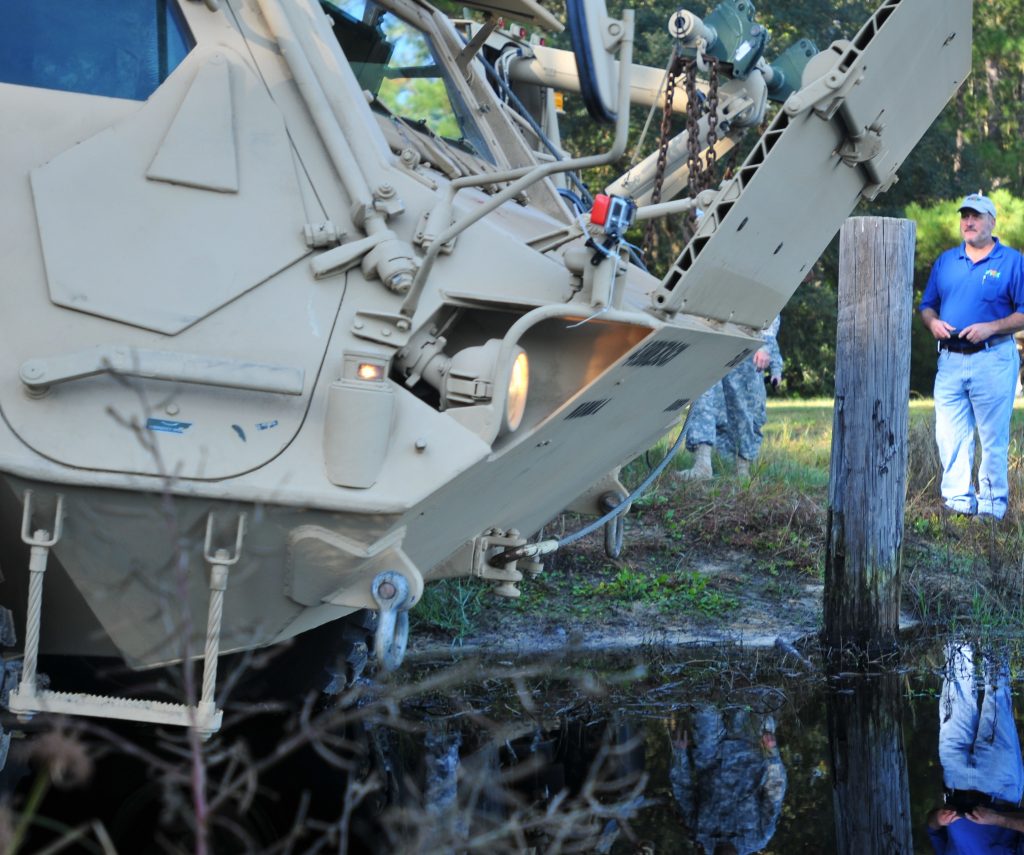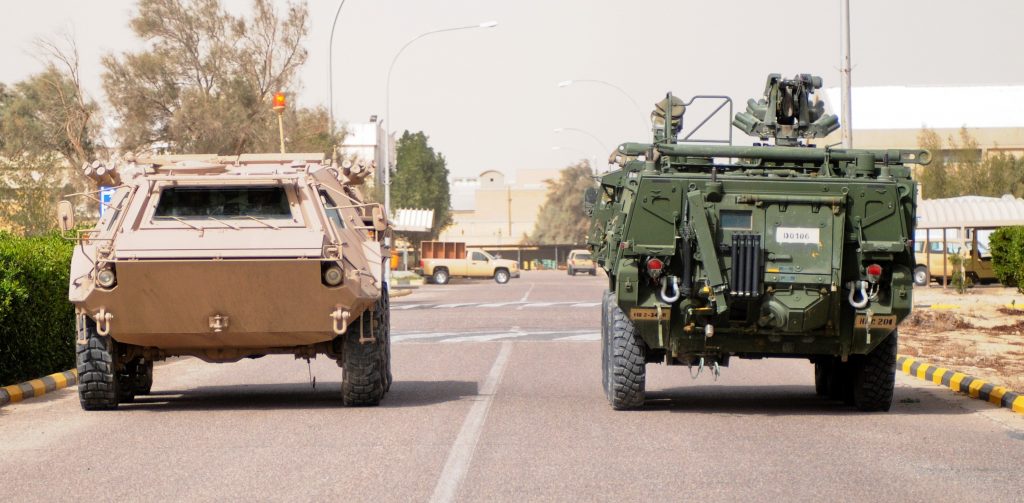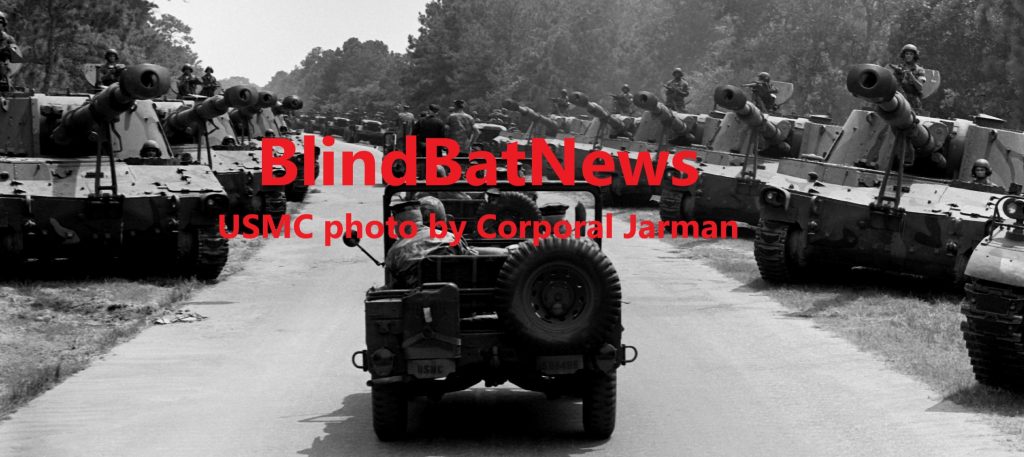Cold War: Approximately 1947 (due to U.S. President Harry Truman’s Truman Doctrine) to 1991 (Operation Desert Storm, collapse of Soviet Union).
The M93 NBCRSV/NBCRV (Nuclear, Biological and Chemical Reconnaissance System Vehicle) was first pseudo-secretly unveiled during the last Cold War battle known as Desert Storm. It was based on the West German Transportpanzer Fuchs, which began service with that NATO country in 1979 (after more than a decade of development). The U.S. Army’s development of the M93 Fox was the result of a decision in 1976 to restart a dedicated NBC organization.
In 1988, the XM93 began its developmental teething pains on Fort Stewart, Georgia. It progressed to XM93E1 phase, then in June 1995 was approved for upgrade to M93A1 (aka Block 1 upgrade), the A1 upgrade was completed in October 1998 (the official year it began service despite being used during Desert Storm in 1991), finally upgraded to M93A1P1 (‘up-armored’ and .50cal Remote Weapons Station) in 2007. There is a newer M93A1P2 variant, however, eventually all M93s will be replaced by the new Stryker NBCRSV.
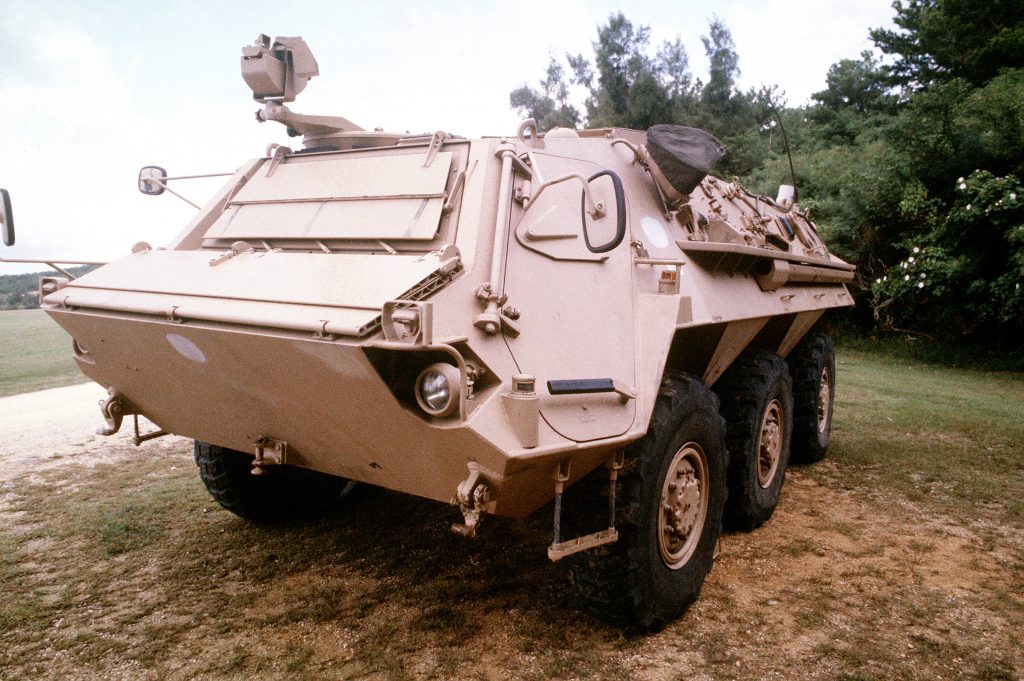
U.S. Army XM93 Fox, tested in Japan. U.S. Marine Corps photo by Lance Corporal C.J. Shell, 14OCT1992.
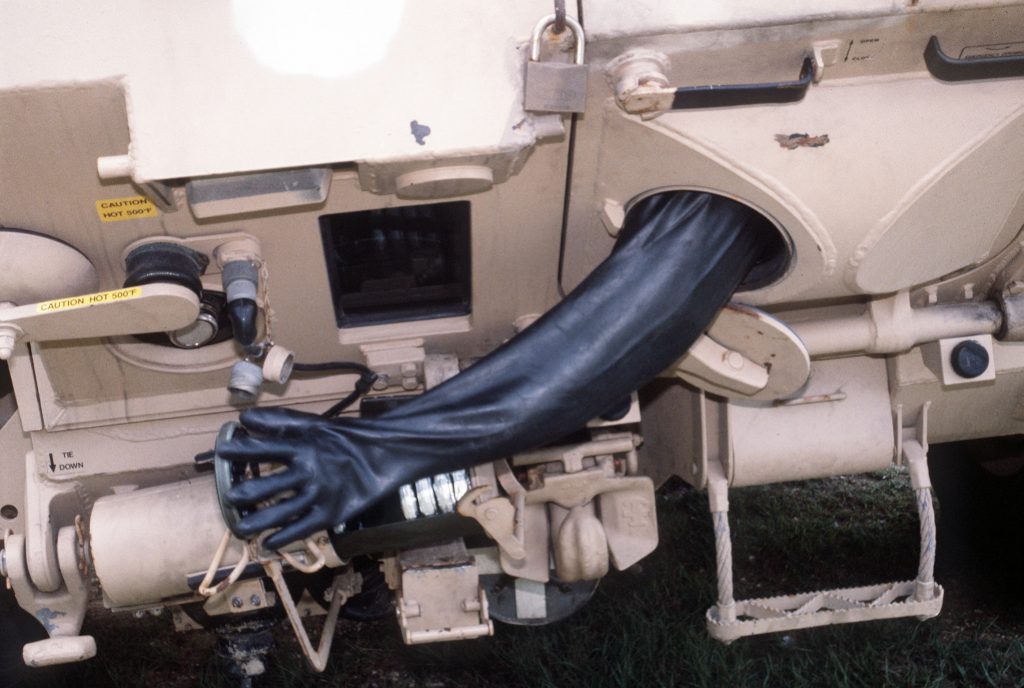
This is how you operate external equipment in a contaminated environment. USMC photo by Lance Corporal C.J. Shell, 14OCT1992.
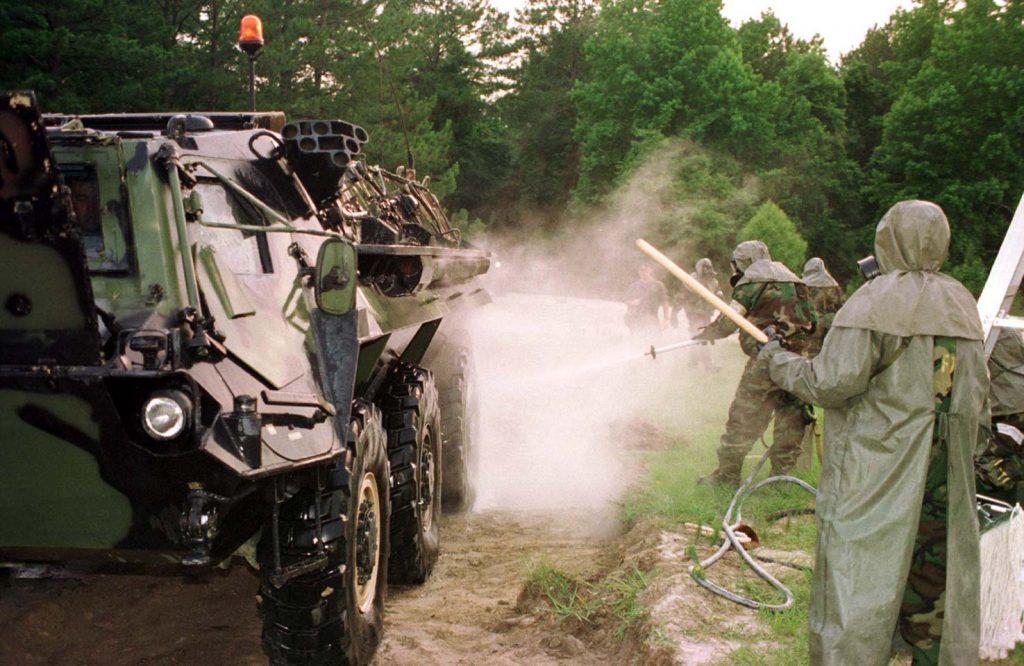
Decontaminating a M93 on Camp Lejeune, North Carolina. USMC photo Lance Corporal C. D. Clark, 17JUL1997.
In April 1996, the U.S. Marine Corps created its own Chemical Biological International Reaction Force (CBIRF). In 1997, the CBIRF held its first wargame in which they put their new M93s (modified German Fuchs) to the test.
By the end of 1997, there were only four M93A1s operating in the Western U.S. There was a concern that U.S. Marines on Twentynine Palms, California, would not recognize the M93A1 as a U.S. vehicle, so photos were issued including night vision photos.
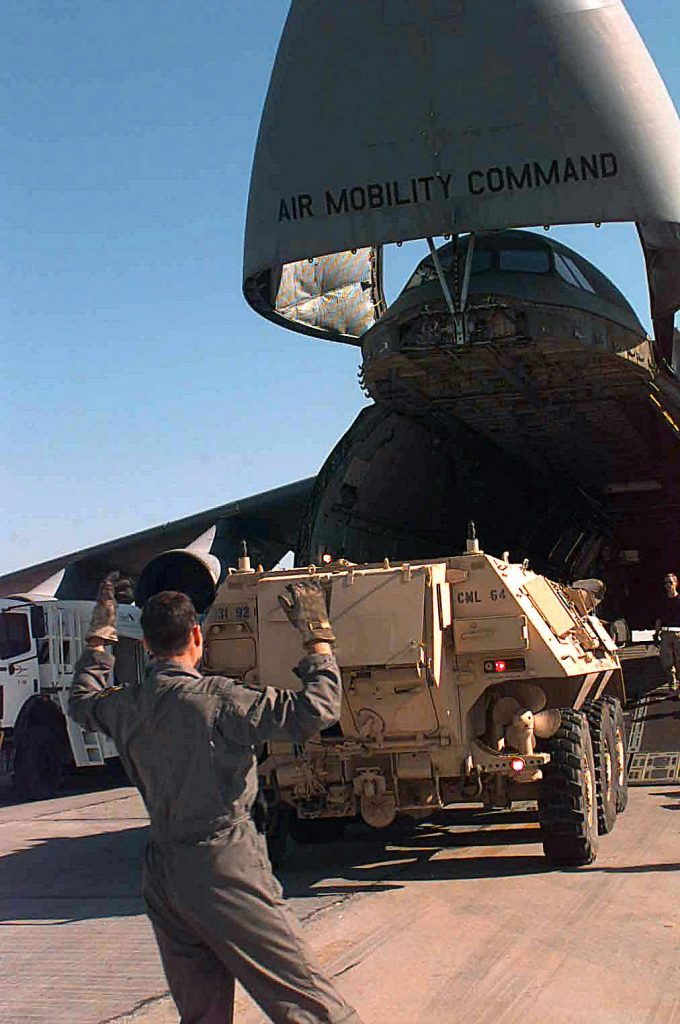
A C-5 Galaxy unloads a M93 Fox on the Kuwait City International Airport, during Operation Southern Watch. U.S. Air Force photo by Technical Sergeant James D. Mossman, 19FEB1998.
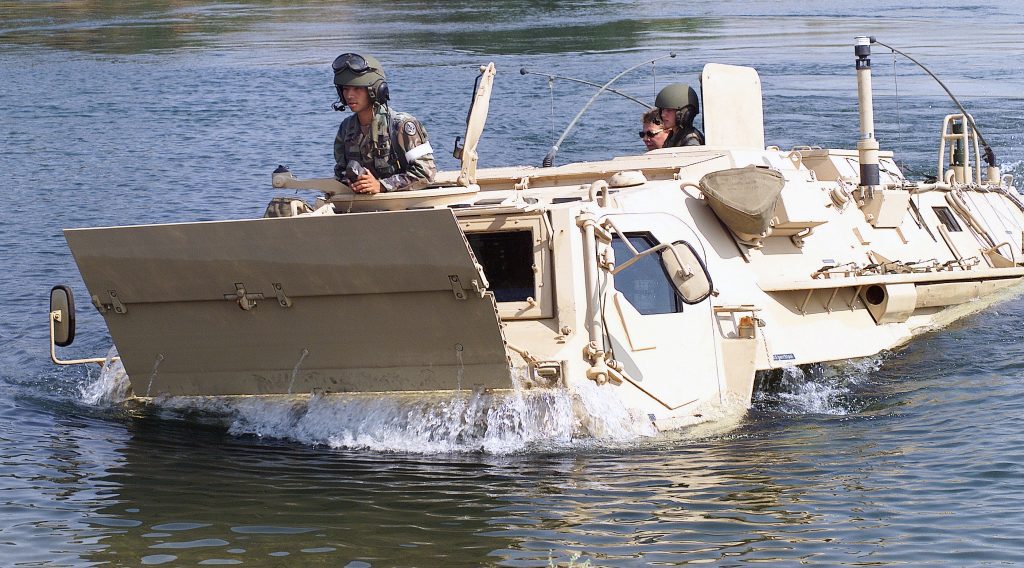
U.S. Army M93A1 of the 89th Chemical Company, 3rd Armored Cavalry Regiment, Fort Carson, Colorado. Photo by Don Sullivan, 02AUG2000.
The 40-thousand-4-hundred pound Fox has propellers for propulsion and steering, a maximum speed of 6MPH in the water.
On land the Fox can hit 65MPH, with a range of 5-hundred miles.
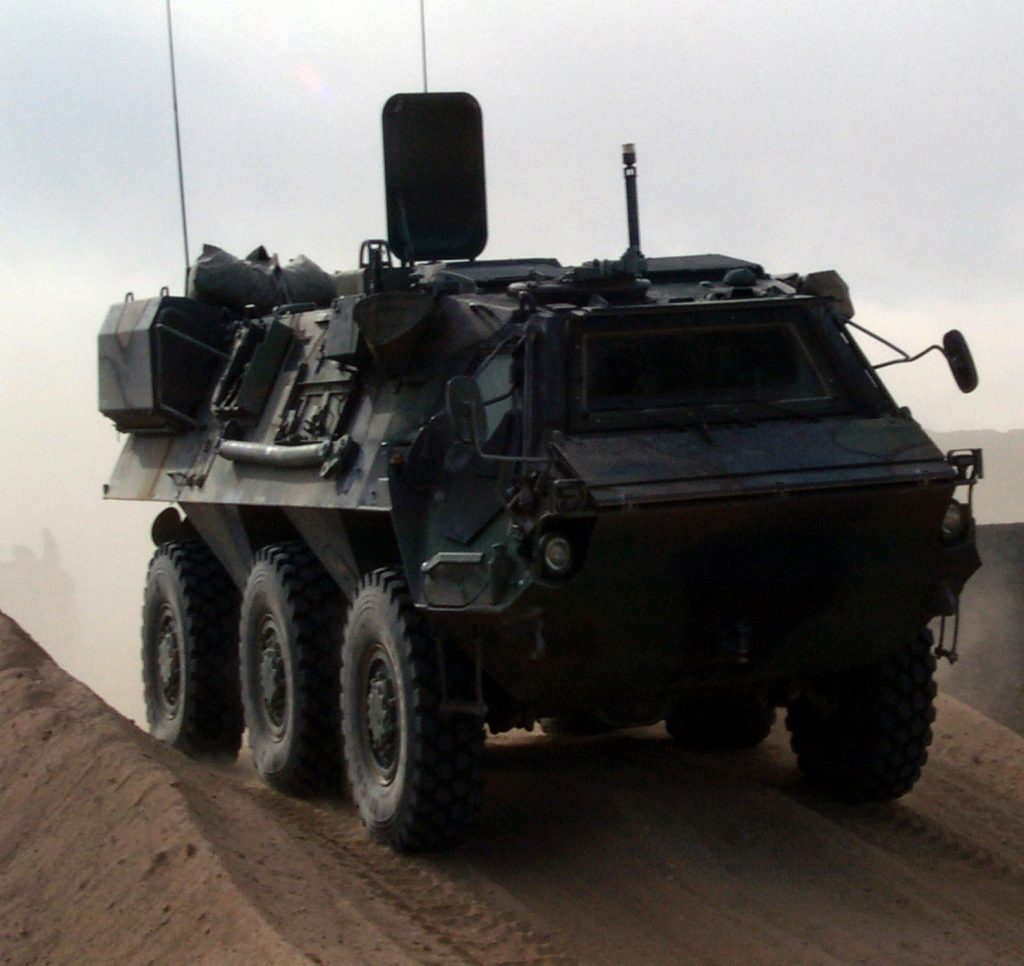
USMC M93A1 in the Quackenbush training area, Marine Corps Air Ground Combat Center, Twentynine Palms, California. USMC photo by Corporal I. M. Gilbert, 19DEC2000.
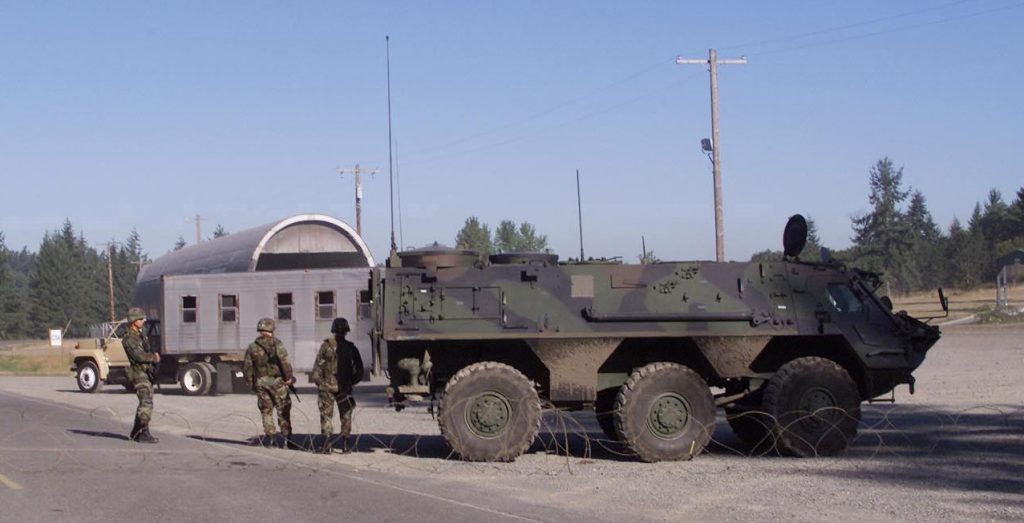
USA M93A1 provides security for East Gate, Fort Lewis, Washington. USA photo by Ken Mitchell, 12SEP2001.
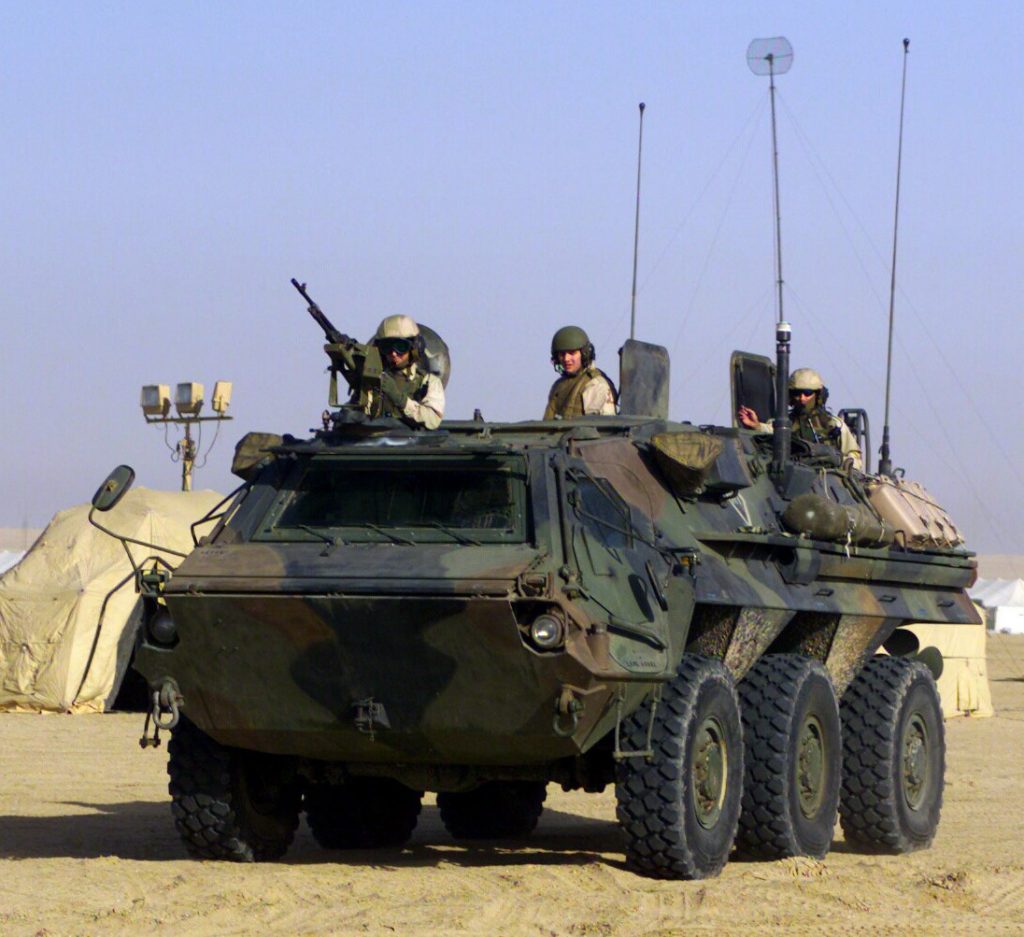
USMC M93A1 patrolling Ta Coyote base, Kuwait, during Operation Enduring/Iraqi Freedom. USMC photo by Sergeant Paul L. Anstine Ii, 31JAN2003.
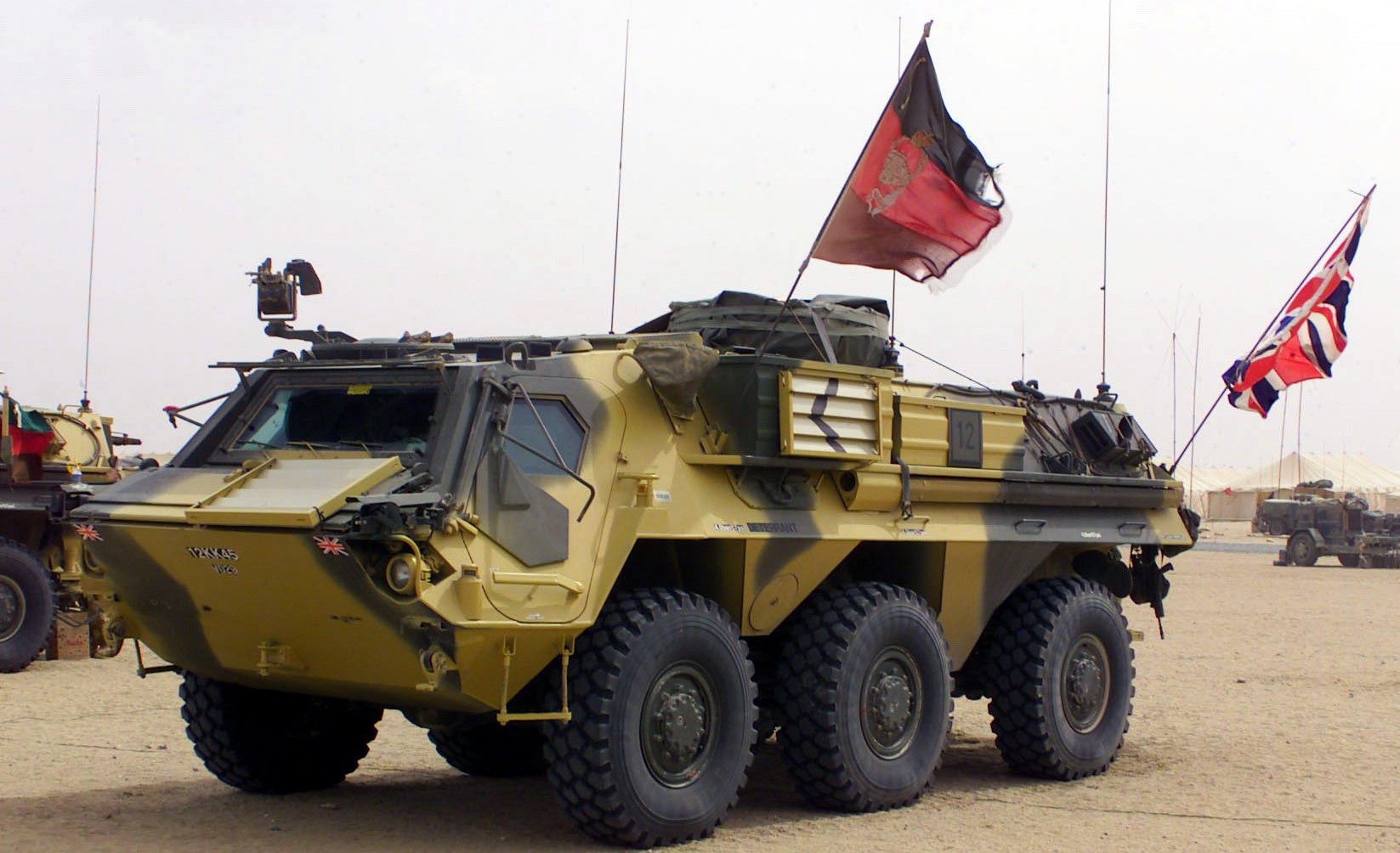
A British Fox, Light Armored Field Radar Vehicle, Transportpanzer-1, during the invasion of Iraq, 11MAR2003. USMC photo by Sergeant Kevin R. Reed.
In July 2008, U.S. Army Headquarters and Headquarters Company, 1st Brigade Special Troops Battalion, 1st Brigade Combat Team, 1st Cavalry Division, took there Foxes for a swim in Borla Lake, Texas. There was no explanation for the tow cable, other than the unit was “testing” their Fox’s swimming abilities after returning from a deployment.
In September 2010, an M93A1 responded to a simulated gas attack on Port Arthur, Texas.
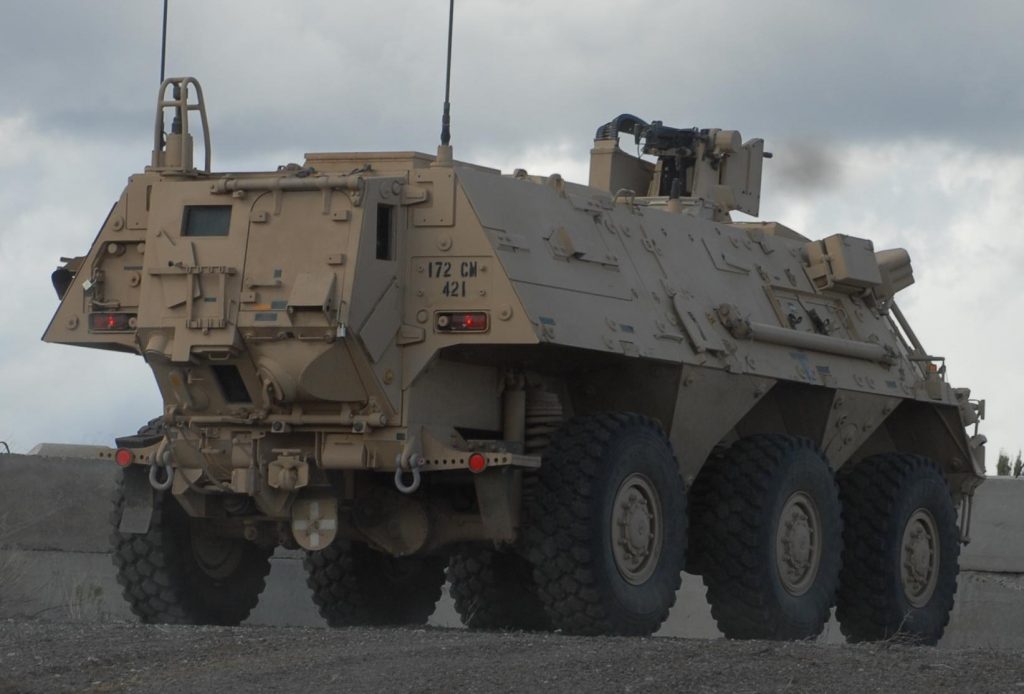
Fox fires its M2HB .50cal, Yakima Training Center, Washington. USA photo by Sergeant Eric Glassey, 07MAY2011.
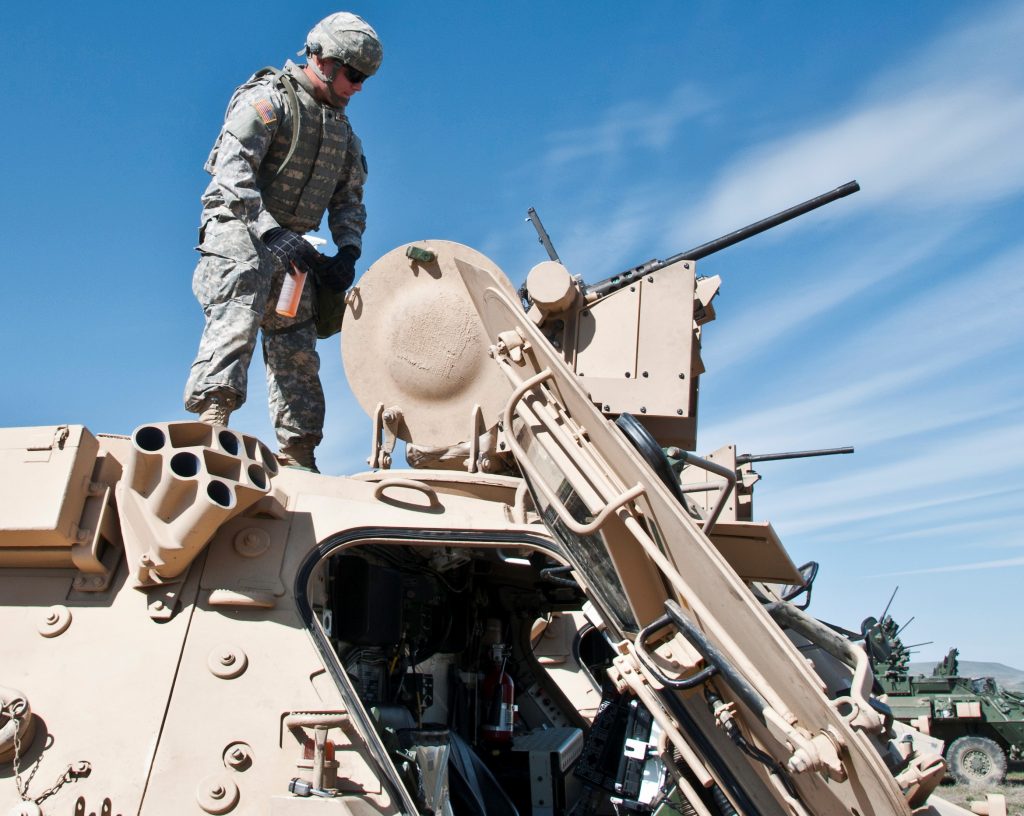
M2HB .50cal Remote Weapon on the Fox, Yakima Training Center, Washington. USA photo by Sergeant Micah VanDyke, 09MAY2012.
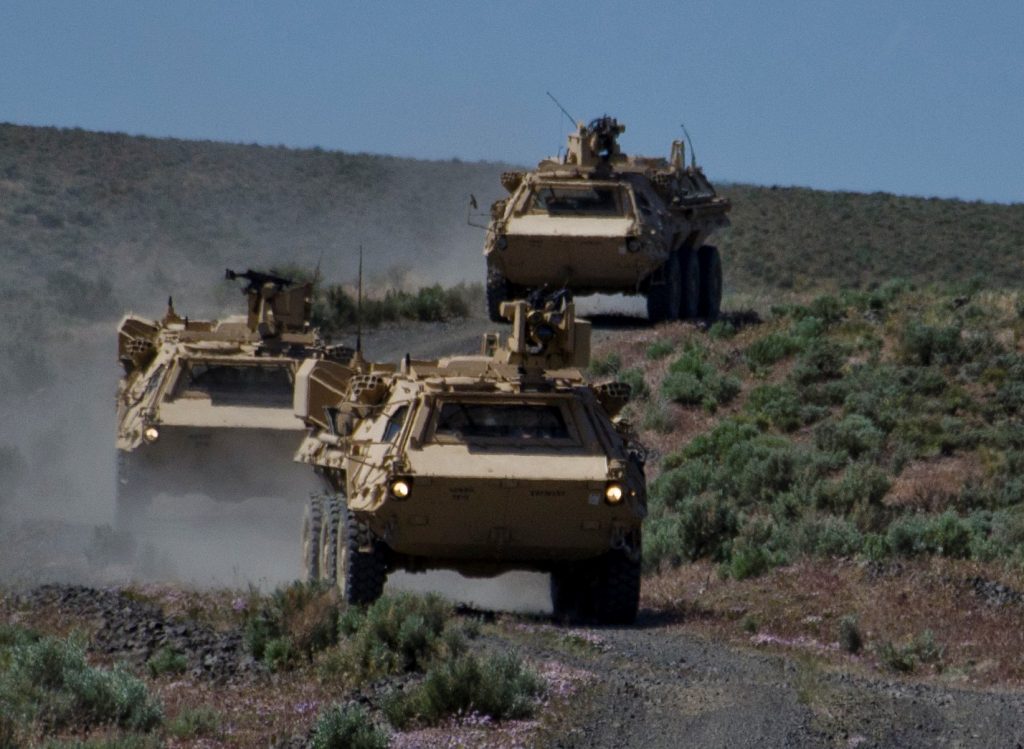
Three M93A1P1 Fox vehicles move into position at the Yakima Training Center, Washington. USA photo by Sergeant James Hale, 14MAY2012.
In October 2013, the last active Army unit operating the M93A1 variant said goodbye to their Foxes. The 51st Chemical Company, 83rd Chemical Battalion, on Fort Stewart, Georgia, will be getting the M1135 Stryker NBCRSV/NBCRV.
In March 2015, a CBRNE demonstration was made on Subhan Logistical Base, in Kuwait, using a Saudi M93A1 and a U.S. Army M1135 Stryker NBCRSV/NBCRV.
Vehicle I-D: 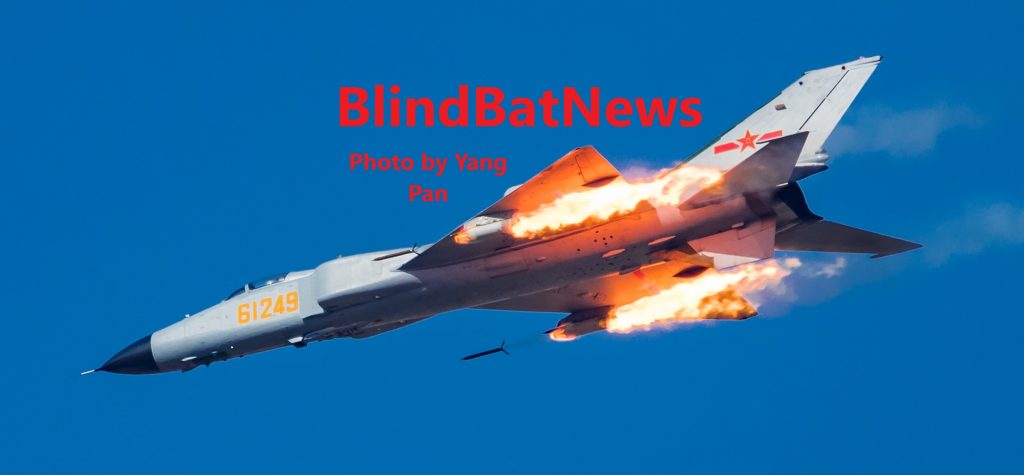 CHINA’S ‘FINBACK’, COLD WAR AND BEYOND
CHINA’S ‘FINBACK’, COLD WAR AND BEYOND

